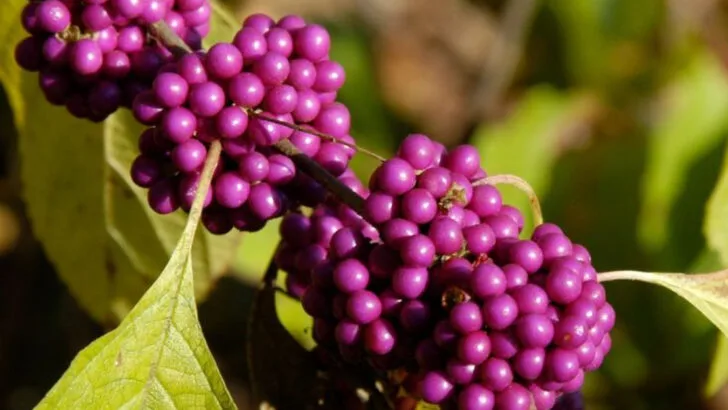Some plants are beautiful. Some are useful. And then there are shrubs—those quiet, often underrated staples of the garden—that do something truly magical. These 18 shrubs don’t just bloom and fade like ordinary plants; they change color dramatically throughout the seasons, shifting like mood rings depending on temperature, light, and time of year. From fiery reds in autumn to golden yellows in spring, deep greens in summer, and even purples in winter—these plants are like nature’s own kaleidoscope.
If you’ve ever wanted a garden that feels alive, expressive, and completely different every time you step outside, these color-changing shrubs are your answer. Many of them are low-maintenance, hardy across a range of climates, and perfect for adding year-round visual interest to borders, walkways, and even container gardens. Their shifting tones don’t just add beauty—they create atmosphere. One week, they’re soft and serene; the next, they’re bold and dramatic.
Whether you’re working with a full backyard, a tidy front lawn, or even a small urban plot, adding a few of these dynamic shrubs can make your space feel like it’s constantly evolving. They’re the show-stealers that thrive quietly, then suddenly surprise you with a whole new look. And the best part? You barely have to do anything but enjoy the show.
Burning Bush (Euonymus alatus)
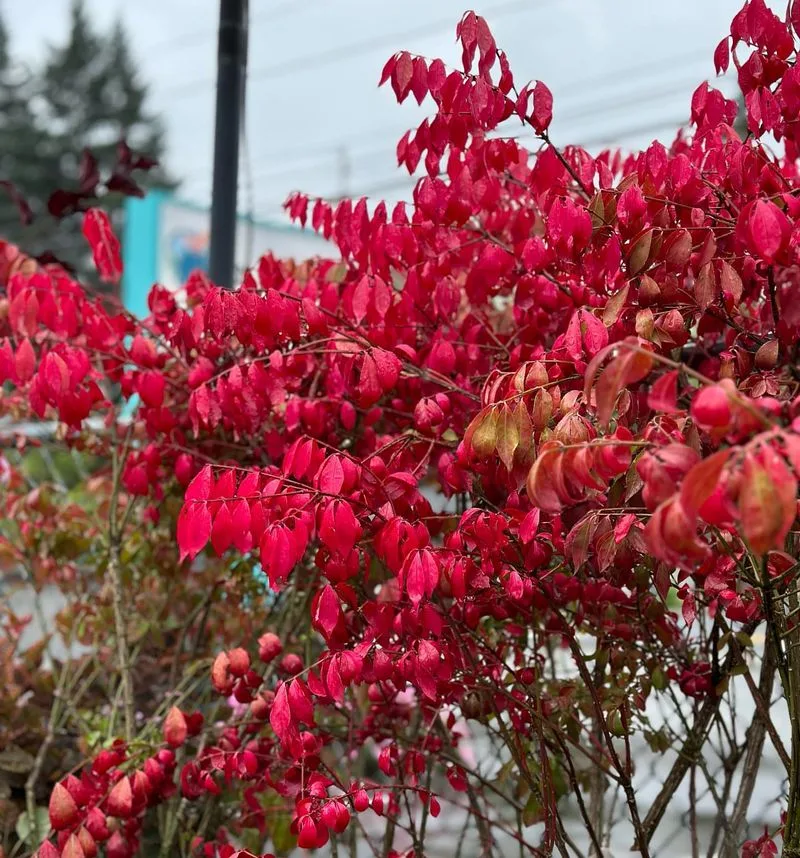
Known for its fiery autumn display, the Burning Bush transforms from lush green to vibrant red, captivating those who pass by. This deciduous shrub, with its graceful arching branches, becomes an autumnal spectacle. Its brilliant color shift is akin to a living flame, sparking interest in any garden setting. During the growing season, its green leaves are unassuming, but come fall, it truly lives up to its name, providing a spectacular visual treat. Ideal for creating hedges or standalone features, the Burning Bush is a testament to nature’s artistry, showcasing an extraordinary seasonal shift.
Oakleaf Hydrangea (Hydrangea quercifolia)
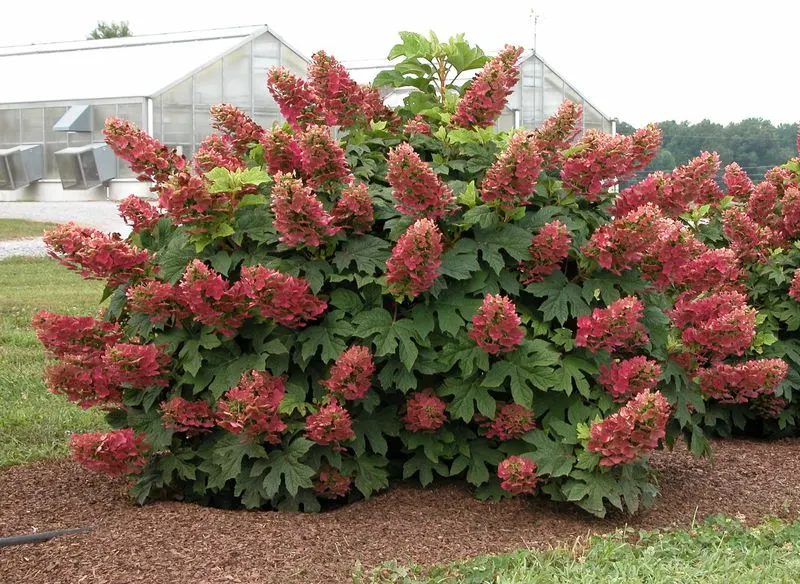
This shrub’s foliage mirrors the majestic oak, with lobed leaves that turn brilliant shades of red and purple in the fall. The Oakleaf Hydrangea stands out not only for its architectural foliage but also for its stunning seasonal transformation. In summer, conical clusters of white flowers add elegance to its form. As the year progresses, its leaves undergo a magical metamorphosis, offering a dynamic display that enhances any landscape. Celebrated for both its blooms and foliage, the Oakleaf Hydrangea is a versatile addition that ensures year-round garden interest.
Aronia (Chokeberry)
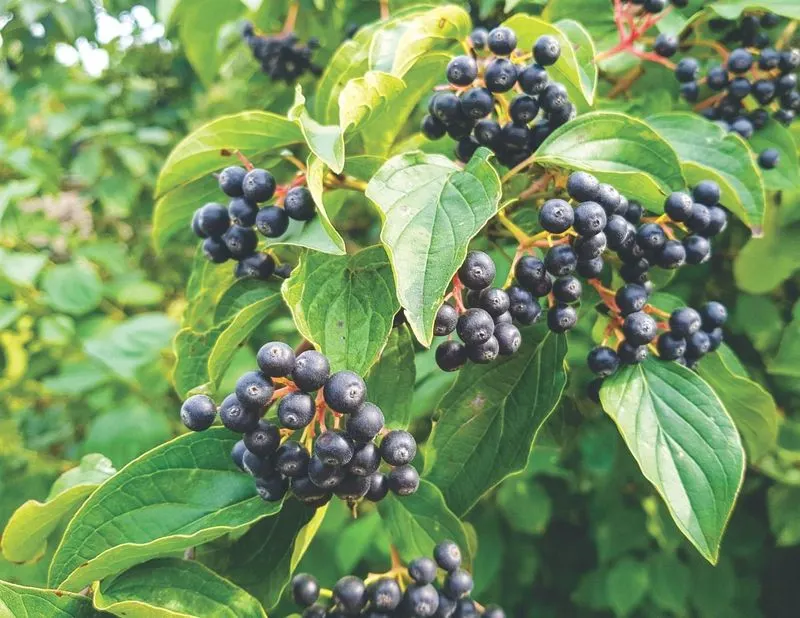
Aronia, often referred to as Chokeberry, captivates with its seasonal color transformations and berry production. This multi-stemmed shrub features glossy green leaves that blaze into shades of red and orange in autumn. Adding to its charm, dark purple berries dangle delicately among the foliage, providing visual and ecological interest. Aronia is not only admired for its vibrant seasonal hues but also valued for its hardiness and adaptability to various garden conditions. This shrub is a favorite for those seeking a touch of color and biodiversity in their outdoor spaces.
Fothergilla
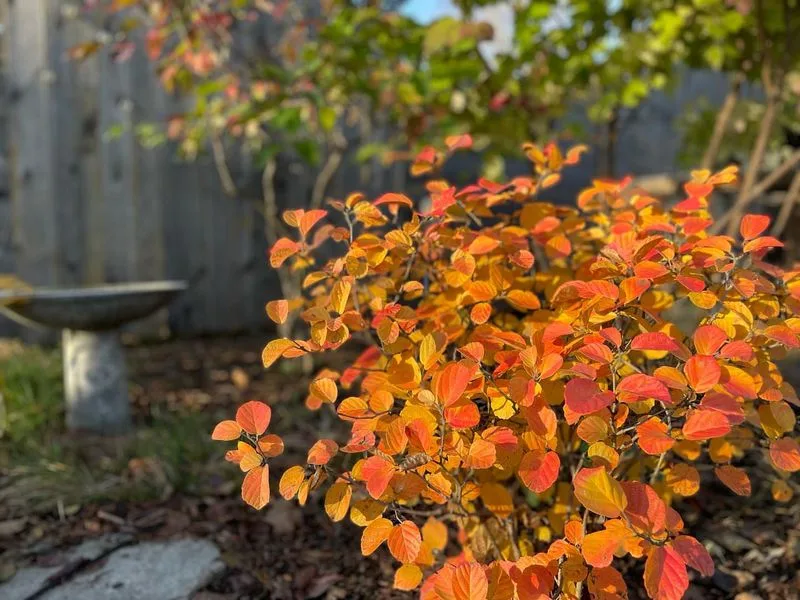
Fothergilla, a deciduous shrub, enchants with its seasonal kaleidoscope of colors. In spring, fragrant, bottlebrush-like flowers emerge against a backdrop of fresh green foliage. By autumn, the leaves exhibit a dazzling array of yellows, oranges, and reds, transforming any garden into a vivid tapestry. This shrub’s ability to change its outfit with the seasons makes it a captivating choice for gardeners. With its blend of sensory delights, Fothergilla invites admiration throughout the year, offering not just visual appeal but also a fragrant springtime experience.
Virginia Sweetspire (Itea virginica)
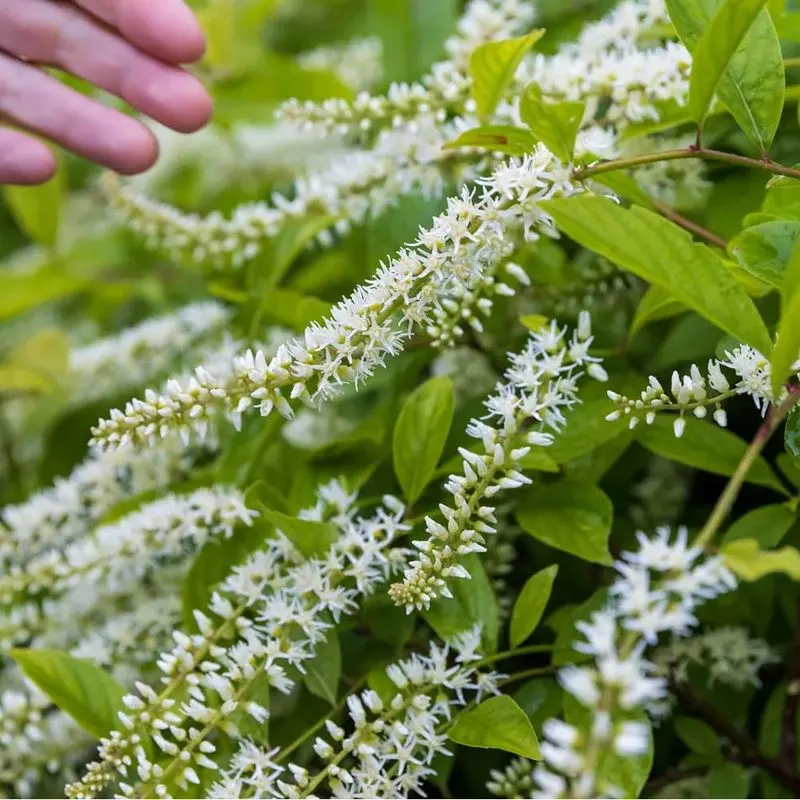
Virginia Sweetspire, a versatile and hardy shrub, is a standout for its graceful form and seasonal color shifts. In early summer, it produces spikes of fragrant white flowers that cascade elegantly. As autumn approaches, its foliage transforms into a rich tapestry of reds and purples, ensuring its place as a garden favorite. The shrub’s ability to thrive in both sun and shade, along with its striking seasonal display, makes it a cherished choice. For those seeking a plant that offers both beauty and adaptability, Virginia Sweetspire delivers year-round satisfaction.
Smoke Bush (Cotinus coggygria)
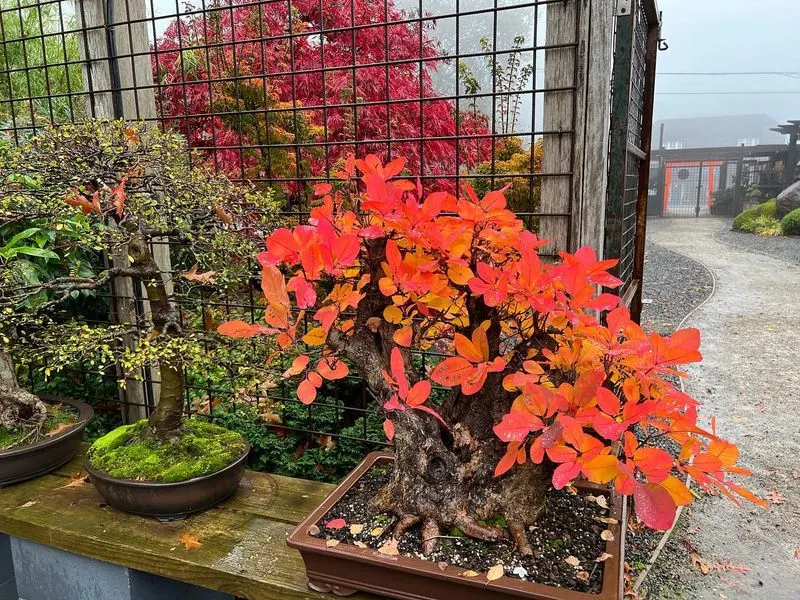
The Smoke Bush, named for its misty, smoke-like blooms, offers a unique visual spectacle. In summer, its airy plumes and purple foliage create a captivating presence. As the season shifts, leaves transition to fiery shades of orange, red, and yellow, adding drama to the garden. This shrub’s dramatic transformation is matched by its architectural form, which provides a stunning focal point. Known for its versatility, the Smoke Bush thrives in various conditions and is ideal for those seeking a bold, colorful statement piece that evolves with the seasons.
Spirea

Spirea is celebrated for its colorful blooms and vibrant fall foliage. In spring and summer, it boasts clusters of pink or white flowers that attract pollinators. As the seasons change, its green leaves turn vibrant shades of red, orange, and gold, providing a dynamic visual display. This shrub’s adaptability to different garden settings makes it a versatile choice for borders or mass plantings. With its ability to transition seamlessly between seasons, Spirea ensures a lively and colorful presence in any landscape, appealing to gardeners seeking year-round interest.
Witch Hazel (Hamamelis)
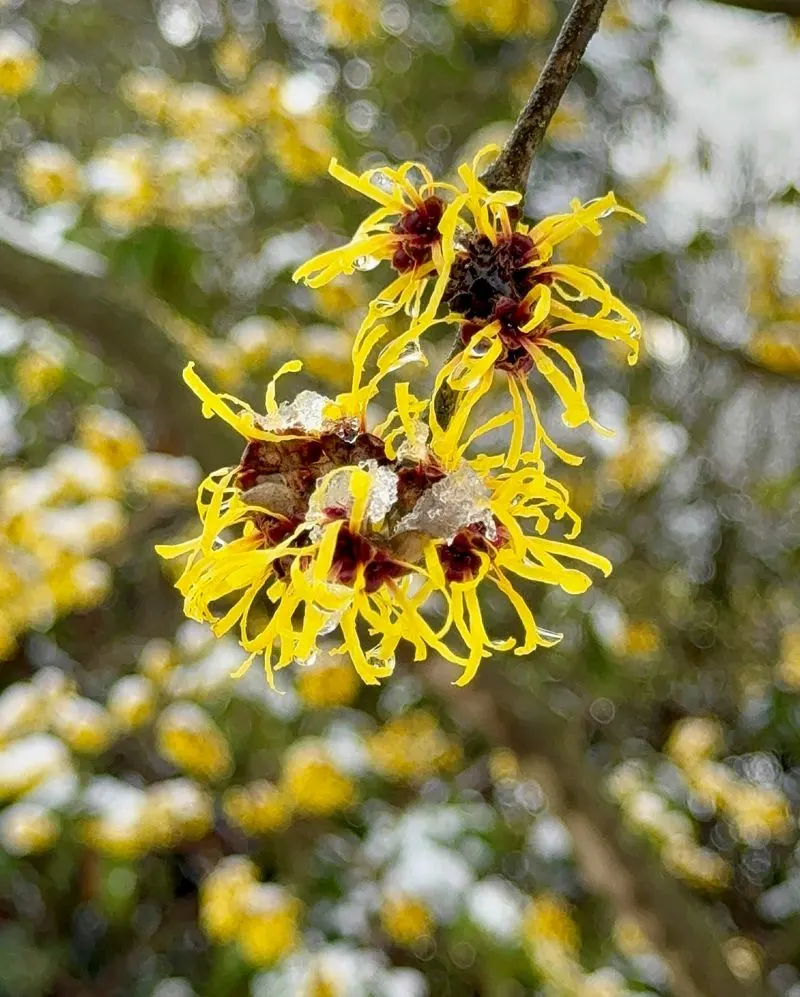
Witch Hazel captivates with its spidery, fragrant blooms that appear in winter, defying the season’s chill. These bright yellow flowers emerge on bare branches, offering a unique splash of color. As spring arrives, lush green leaves develop, later turning to striking shades of yellow and orange in autumn. Witch Hazel is renowned not only for its intriguing winter display but also for its vibrant fall transformation. This shrub’s ability to surprise with color when least expected makes it a garden favorite, providing visual interest across multiple seasons.
Japanese Maple (Acer palmatum)
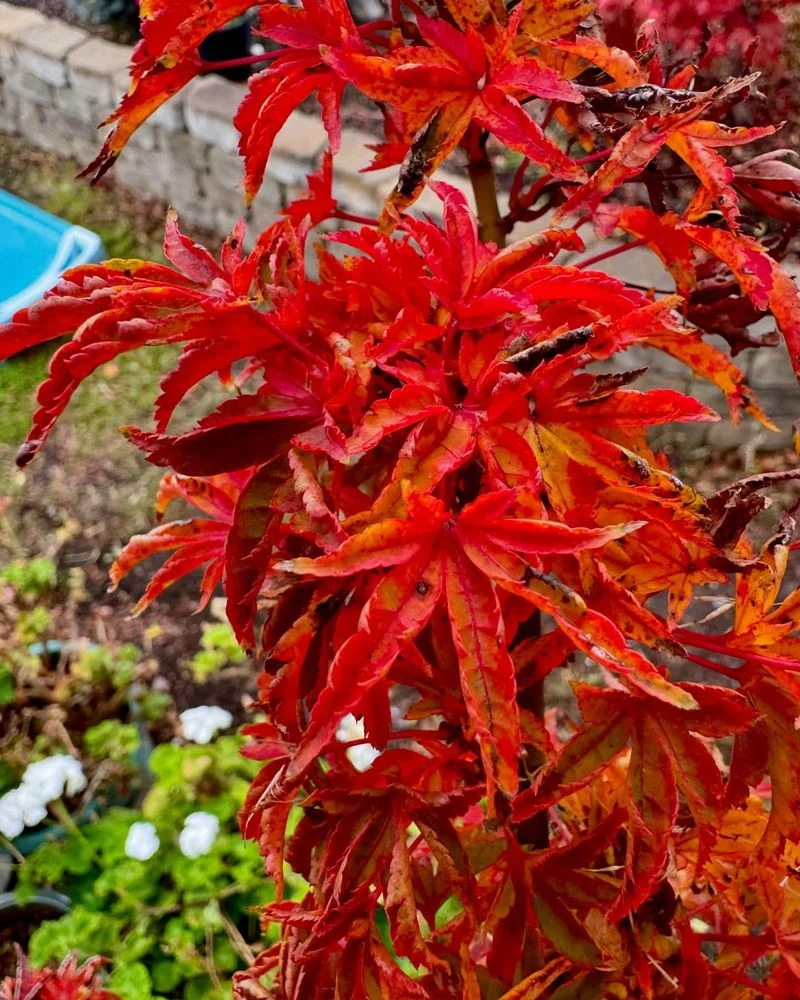
Renowned for its delicate, deeply lobed leaves, the Japanese Maple offers a breathtaking color show. In spring and summer, its leaves are a vibrant green, but come fall, they explode into fiery reds and oranges. This transformation creates a striking contrast against the landscape. The Japanese Maple’s graceful form and intricate foliage make it a prized specimen in any garden. Whether as a standalone feature or part of a mixed planting, its seasonal color shifts and elegant structure ensure it remains a perennial favorite among gardeners and landscape designers.
Ninebark (Physocarpus opulifolius)
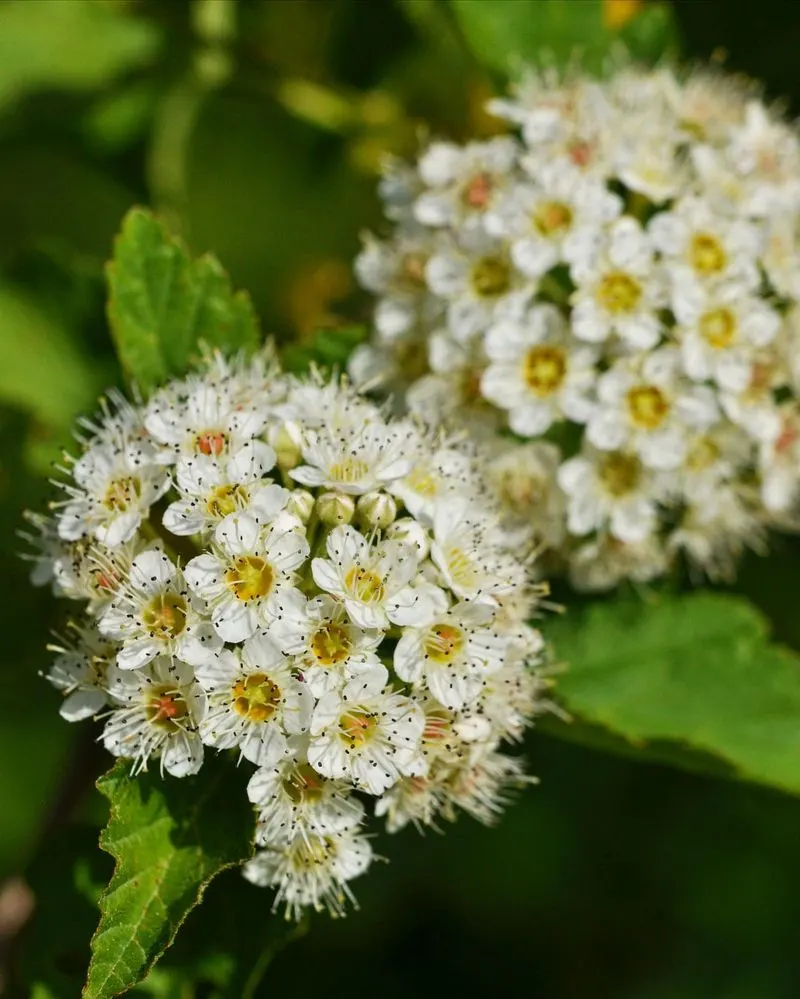
Ninebark is appreciated for its textured bark and dramatic foliage changes. Its leaves, starting as a bright green, transform into deep burgundy and bronze hues by autumn. The shrub’s peeling bark adds winter interest, making it a year-round garden asset. Known for its hardiness and ability to thrive in various conditions, Ninebark is a reliable choice for gardeners. Its colorful transformation and textural contrast make it an appealing addition to any landscape, offering visual intrigue from season to season. A favored plant for those seeking a dynamic yet low-maintenance shrub.
Heavenly Bamboo (Nandina domestica)
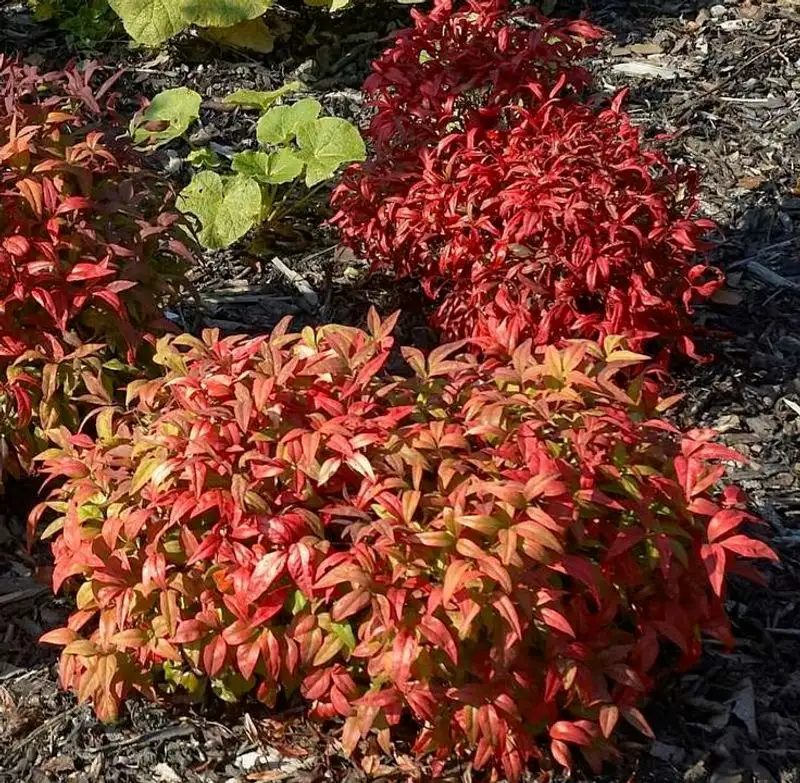
Despite its name, Heavenly Bamboo isn’t bamboo at all, but rather a versatile shrub known for its colorful display. In winter, its leaves turn a striking red, complementing clusters of bright red berries. This transformation adds warmth to frosty landscapes. Throughout the year, it offers lush green foliage, providing a constant backdrop of color. Heavenly Bamboo’s ability to adapt to different environments makes it a popular choice for gardeners. Its vibrant winter hue and persistent berries contribute a cheerful note to any garden.
Sumac (Rhus)
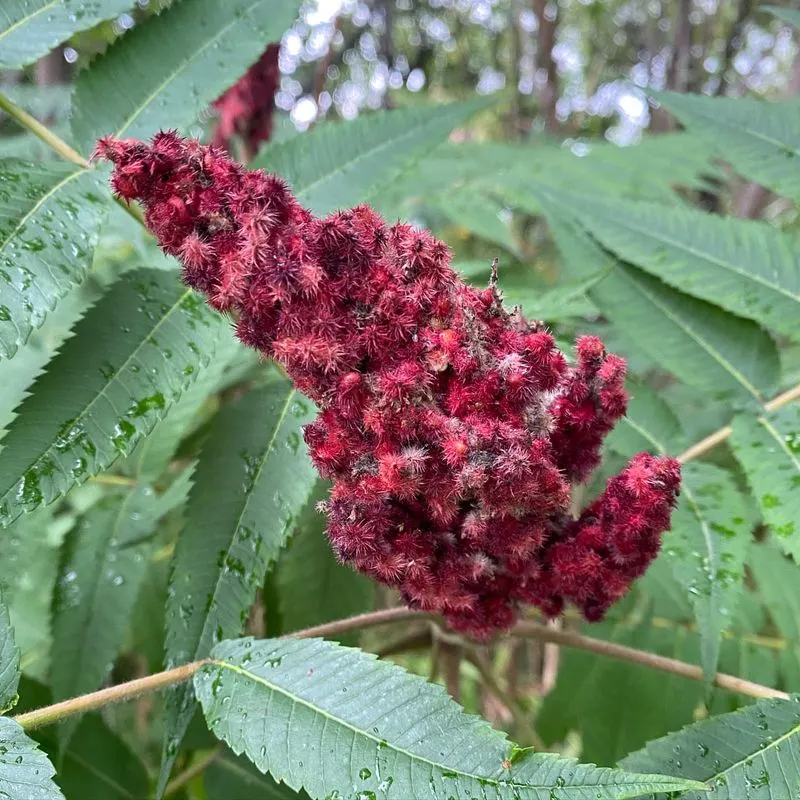
Sumac is a standout shrub known for its vibrant fall color and unique leaf structure. During autumn, its feathery leaves turn brilliant shades of red and orange, creating a striking display. The shrub’s architectural form and vivid color change make it an eye-catching addition to naturalized plantings. Sumac is often seen in wild landscapes, where it provides food and habitat for wildlife. Its ability to thrive in challenging conditions and its dramatic seasonal transformation make it a favored choice for those looking to add a touch of wild beauty to their gardens.
Barberry (Berberis)
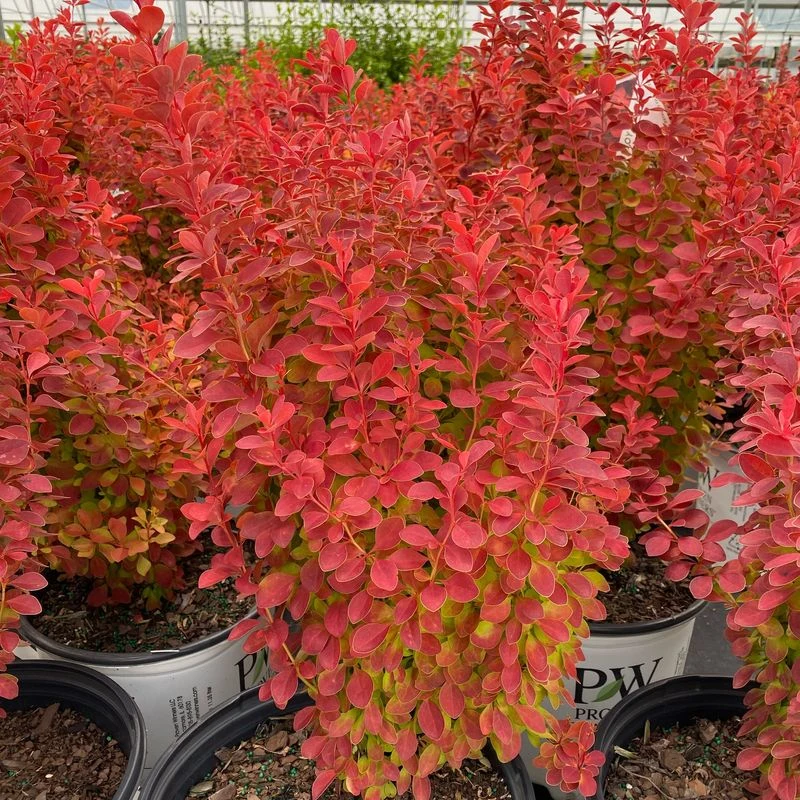
Barberry is celebrated for its vibrant autumn foliage and thorny branches. As summer fades, its leaves shift from green to a fiery red, making it a standout feature in the garden. Bright red berries accompany this transformation, adding to its visual appeal. This hardy shrub is known for its adaptability and is often used for hedging due to its dense, protective nature. Barberry’s combination of color and structure provides an effective deterrent while adding seasonal interest. Its ability to change dramatically through the seasons makes it a valuable addition to any landscape.
Blueberry Bush (Vaccinium)
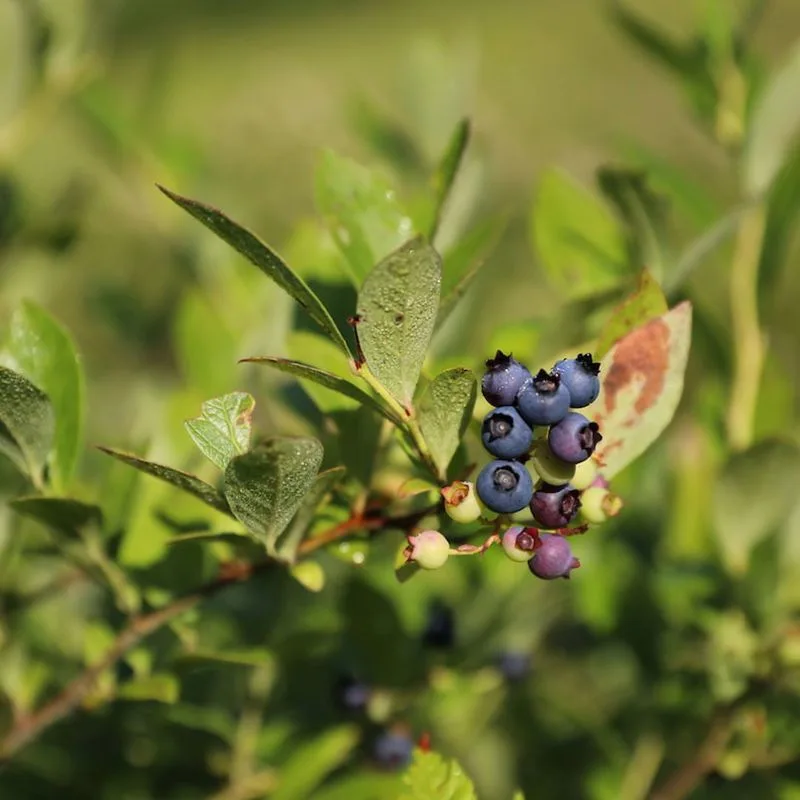
Beyond its delicious fruit, the Blueberry Bush captivates with its stunning fall foliage. As the fruiting season ends, its leaves turn shades of scarlet and crimson, painting the garden with bold hues. This transformation marks the end of the harvest and the approach of winter. Throughout the year, it provides both a visual feast and a culinary delight. The Blueberry Bush’s dual role as a food source and ornamental plant makes it a beloved addition to home gardens. Its seasonal color shift is a delightful bonus for those who cultivate it.
Beautyberry (Callicarpa)
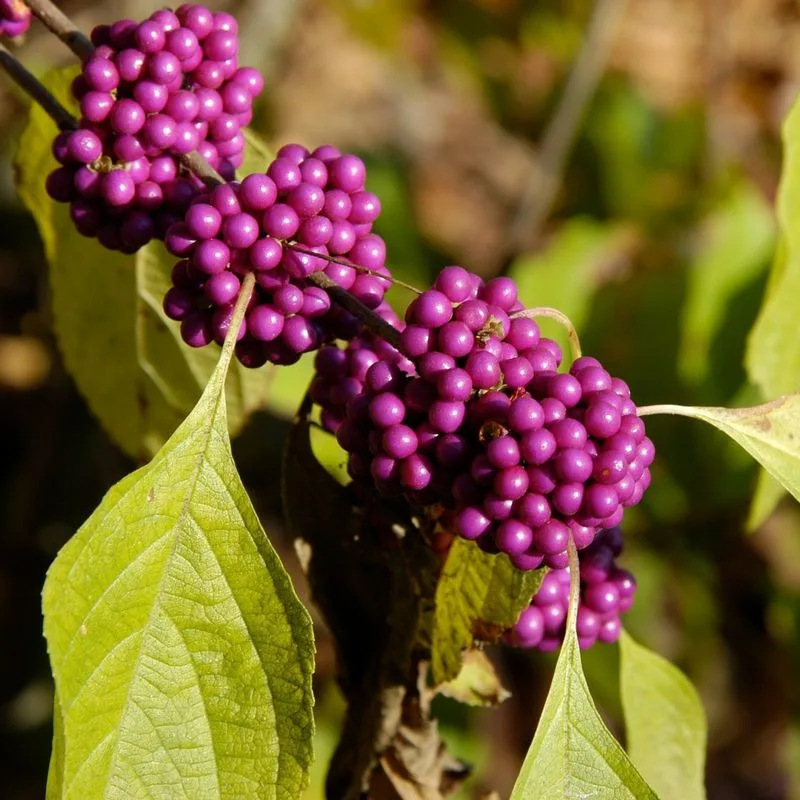
The Beautyberry shrub lives up to its name with its striking purple berries and vibrant fall foliage. In autumn, the leaves transition to a golden hue, providing a perfect backdrop for the jewel-toned berries. This color combination creates a vivid display that catches the eye. Beautyberry is often used in naturalized and wildlife gardens, where it attracts birds and pollinators. Its ability to offer both visual appeal and ecological benefits makes it a versatile choice for gardeners seeking to enhance their landscapes.
Mountain Laurel (Kalmia latifolia)

Mountain Laurel is admired for its stunning blooms and evergreen foliage. In spring, clusters of pink and white blossoms make a dramatic appearance, while its glossy leaves provide year-round color. As winter approaches, the shrub’s foliage takes on a deep, rich tone, standing resilient against the cold. This combination of floral beauty and persistent greenery makes Mountain Laurel a valuable addition to the landscape. Its unique charm lies in its ability to provide color and interest across seasons, offering a touch of elegance to gardens and natural settings.
Red Twig Dogwood (Cornus sericea)
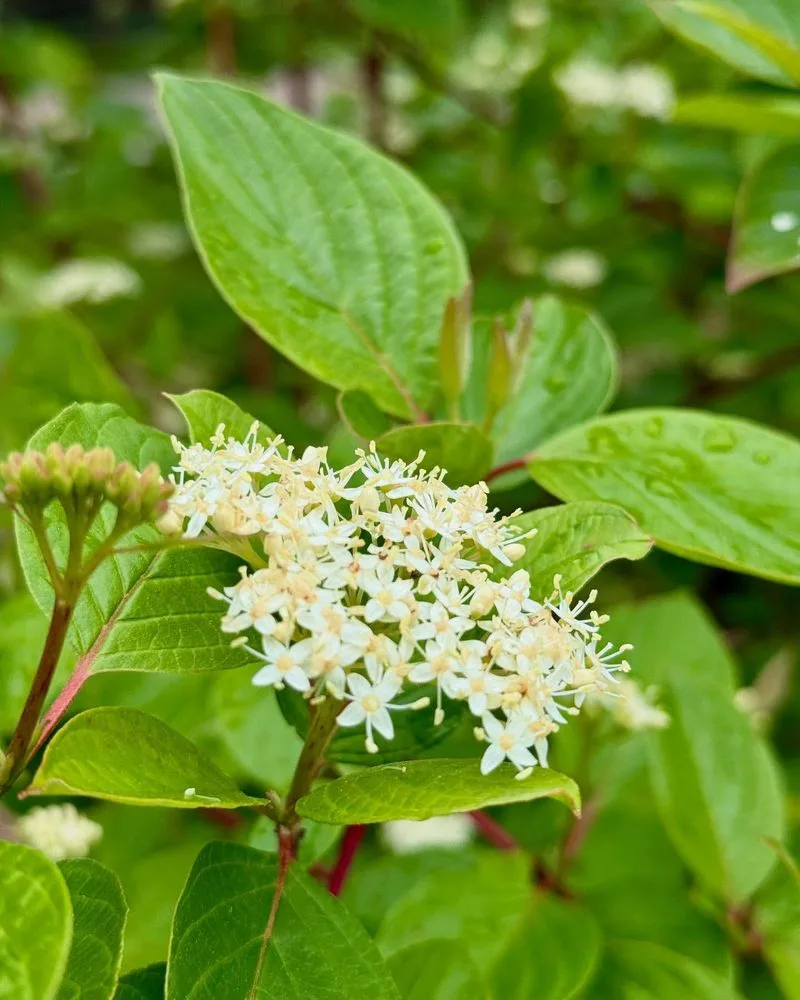
The Red Twig Dogwood is renowned for its striking red stems that light up winter landscapes. In spring and summer, it sports green leaves and white flowers, but as the foliage drops, the vibrant red branches take center stage. This color contrast against a snowy backdrop creates a stunning winter display. The Red Twig Dogwood’s ability to thrive in wet conditions makes it an excellent choice for planting near water features or in rain gardens. Its year-round interest and dramatic winter presence make it a standout shrub for any garden.
Dwarf Korean Lilac (Syringa meyeri ‘Palibin’)
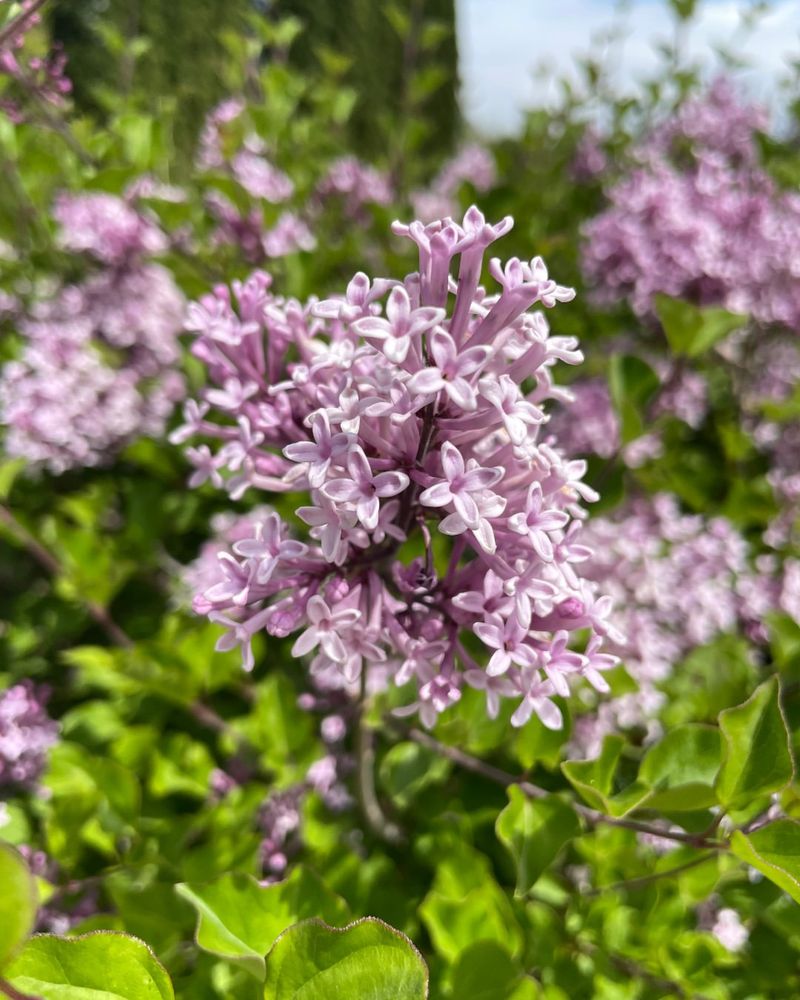
The Dwarf Korean Lilac enchants with its sweetly fragrant blooms and compact form. In late spring, clusters of purple flowers cover the shrub, filling the air with their delightful scent. The lush green foliage provides a lovely contrast to the blooms. As the season progresses, the leaves may develop subtle yellow tones, adding a gentle touch of color to the garden. This lilac’s ability to fit into small spaces while offering a big impact makes it a popular choice for urban gardens and containers, bringing fragrance and charm to any setting.

